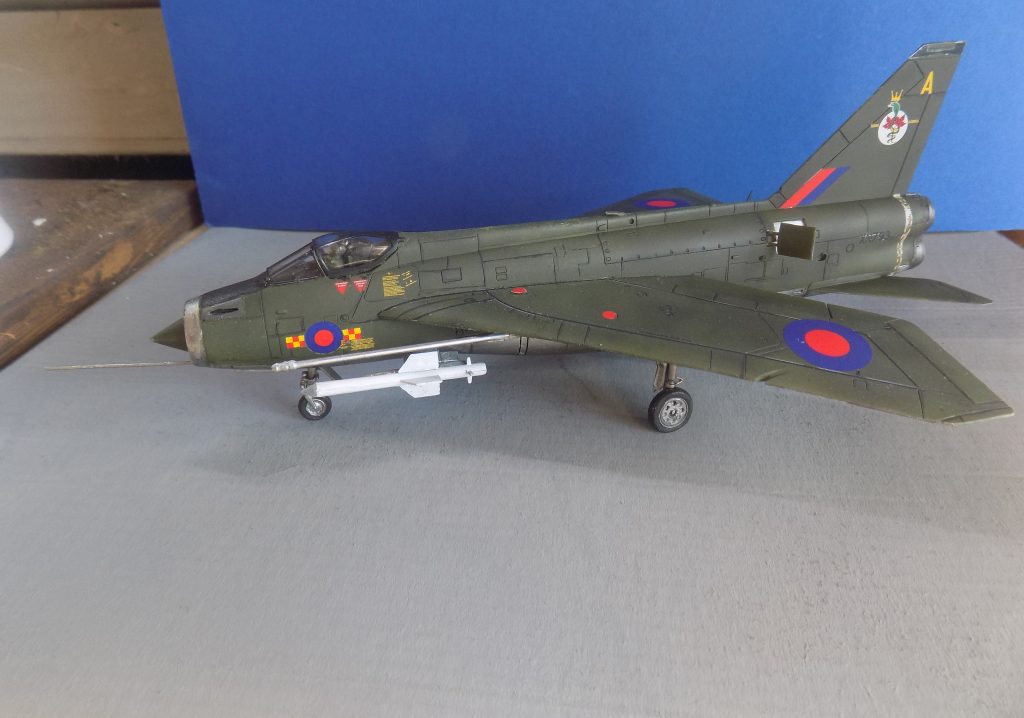
Despite this being a relatively new tooling by Airfix, it had a number of issues. I found it impossible to get the fuselage halves to join near the nose without major surgery inside to the jet intake, fortunately none of which can be seen when complete. It also needed liberal amounts of superglue. Even then I still had to sand the sides to get the canopy to fit better but still not 100%. The missiles were a nightmare to attach and I should have done that at the start and not at the end when the model was already painted! Still, as an experienced modeller, you get used to these problems and overall I am fairly pleased with the final result. This was only my second Lightning model. I built the Frog/Novo version many years ago which I painted all silver from a spray can! Needless to say, I have come a long way since those days!
The iconic Lightning has to rank as one of my all-time favourite jets and I should imagine every young boy who saw one flying dreamed of being a Lightning pilot. I remember seeing one at Exeter airport air display as a child. It was deafeningly noisy at low level and after streaking past the crowd just above the runway it went straight up like a rocket almost vertically and disappeared into the blue in seconds. Unforgettable!

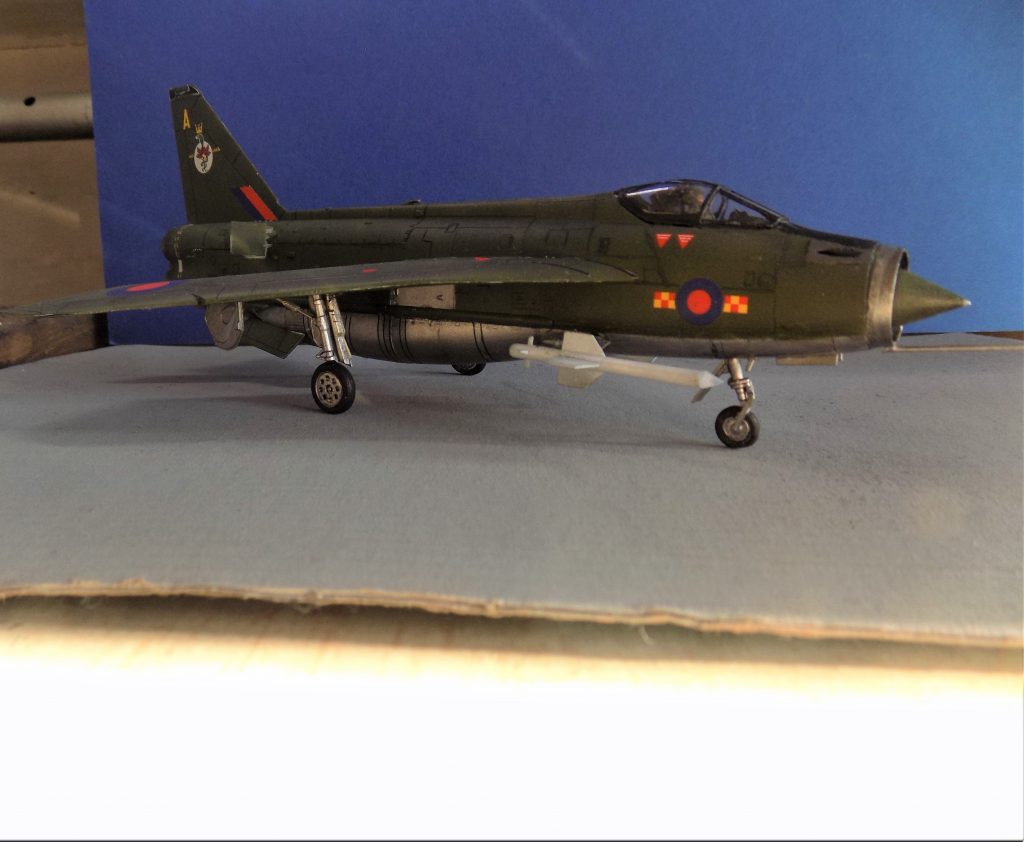
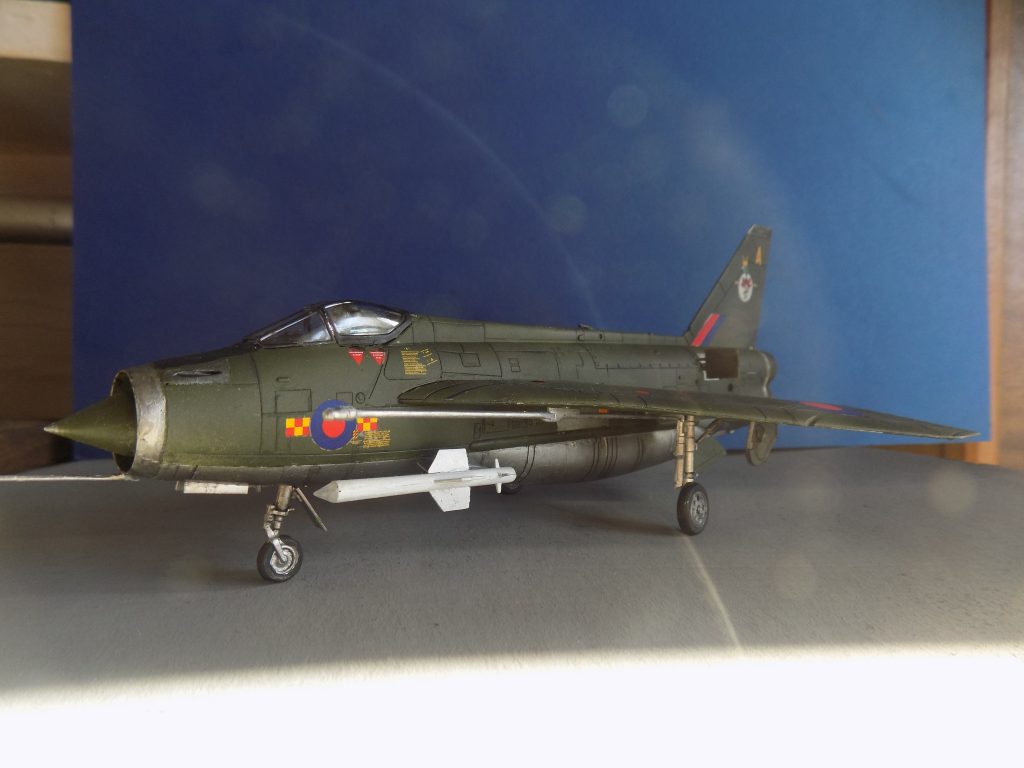
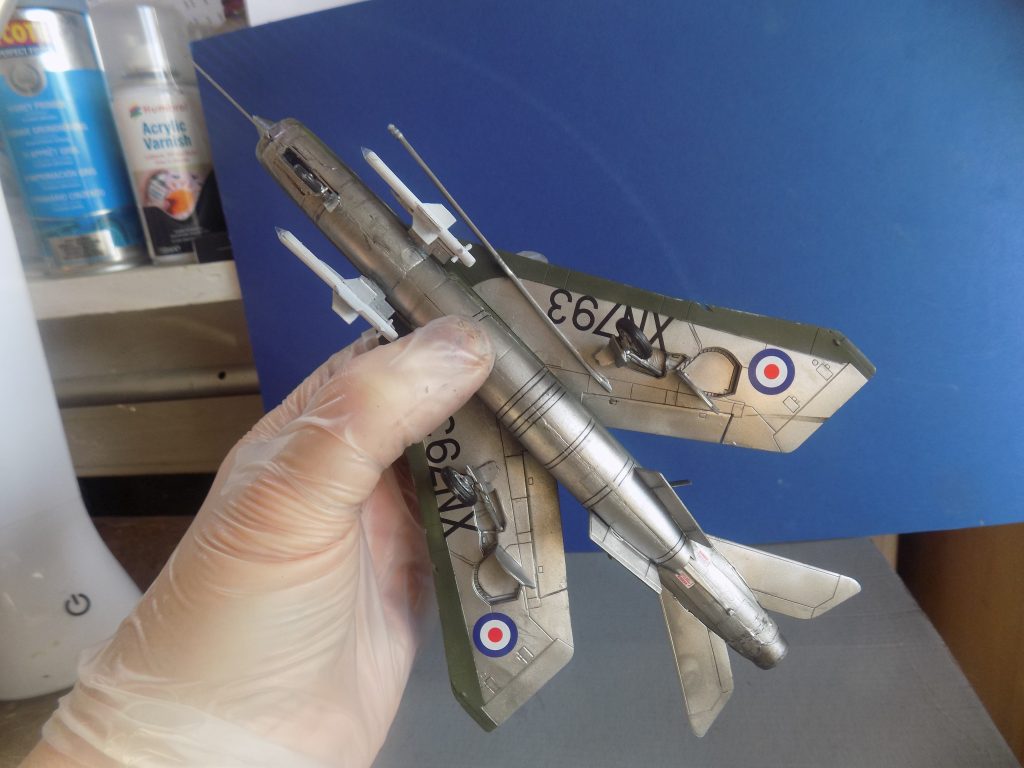
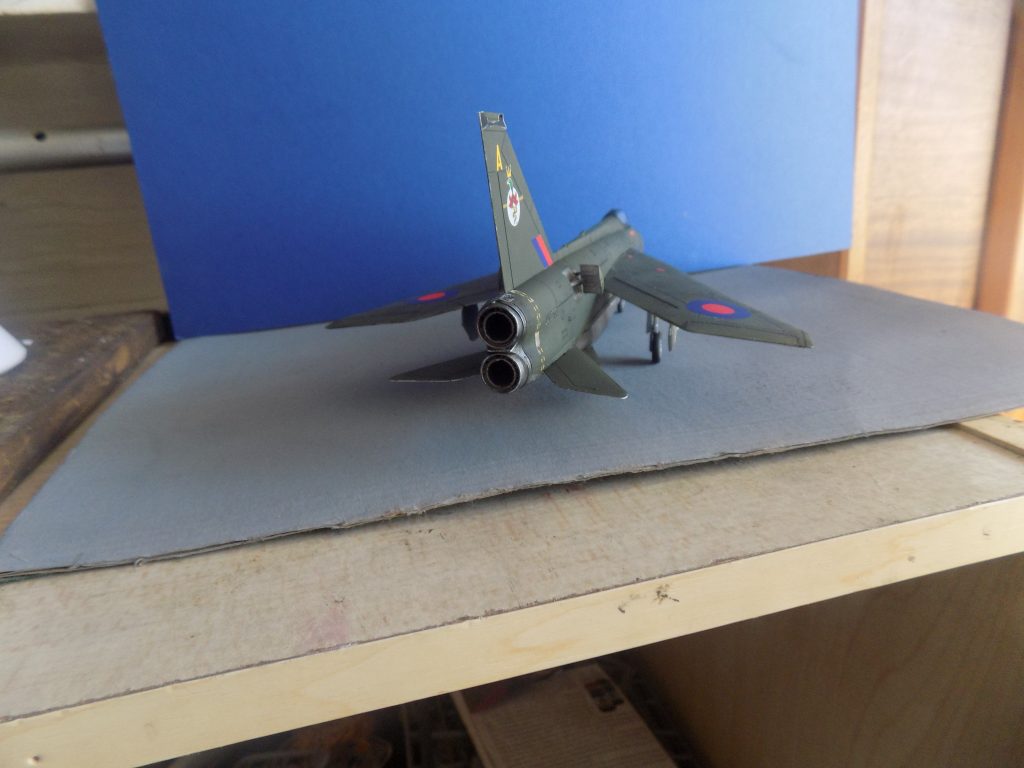
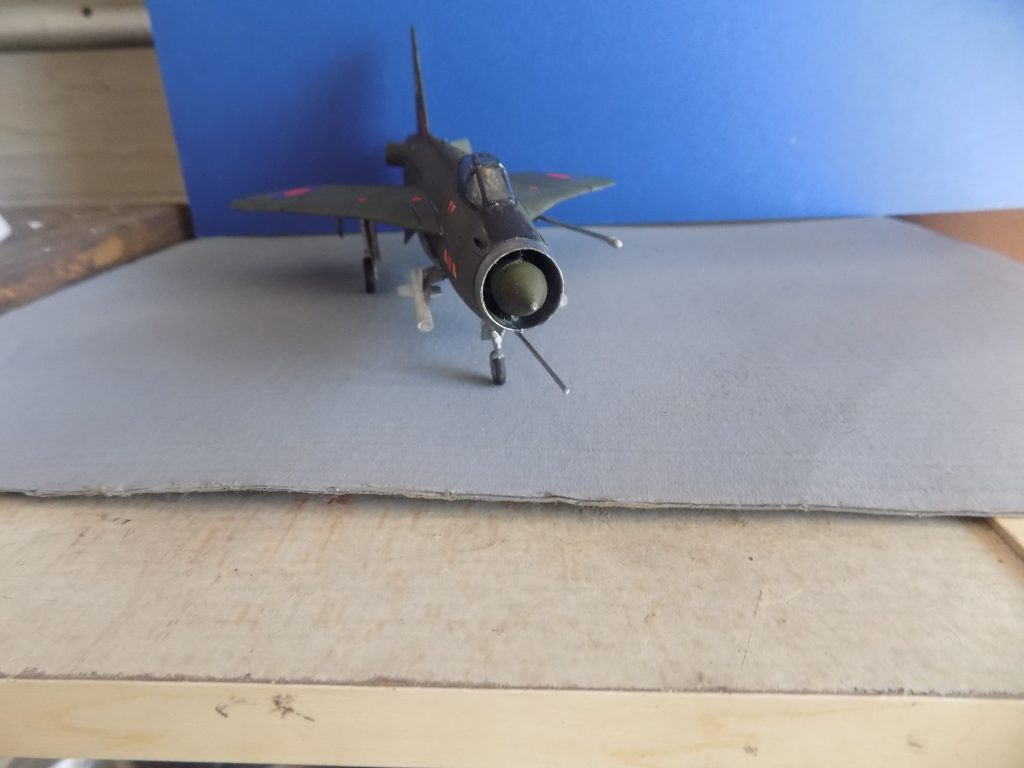
The Lightning was an incredibly complicated piece of engineering and it took about 1,000 hours of maintenance for each hour of flight. This fact together with its ‘short legs’ or restricted range, meant that it was not a great export success although some were bought by the Kuwaiti and Saudi air forces. It was later developed by the British Aircraft Corporation (BAC) and equipped 9 squadrons which were the backbone of British air defence for a quarter of a century. The Lightning was eventually superseded by the Tornado, a far more boring plane in comparison in my opinion!
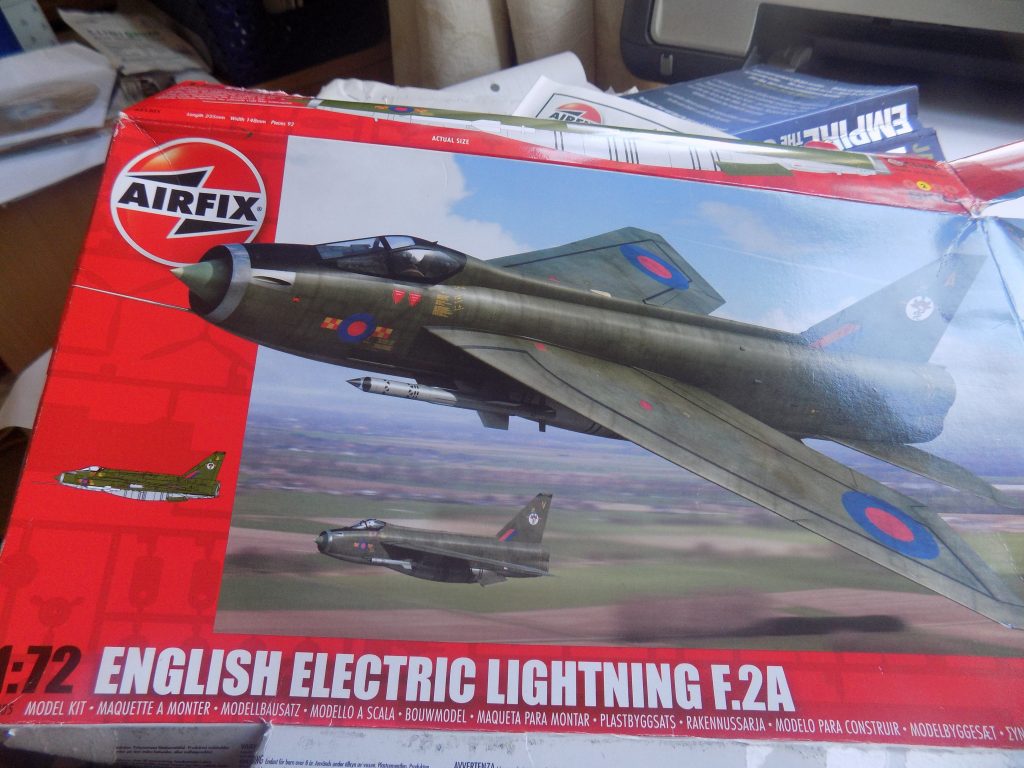
Great job on this Mike,you would never know the problems you had with it. lovely camo always liked the olive scheme remember see one at Mildenhall air show early 80s from Binbrook in the static but unfortunately never one flying .
Thanks Rich, well I am the master of disguise! Another aspect I didnt mention was the finish. I went over it with satin varnish after the gloss but it still looked too shiny for my liking. So I went over it with ultra matt and that was a bit too dull! So, finally, I gave it a few fine mists of satin making it hopefully a bit more realistic. I didnt fully realise what an incredible aircraft this was till I made this model.